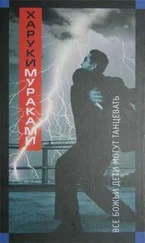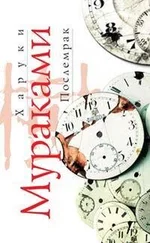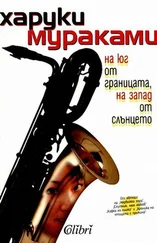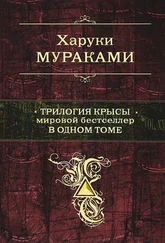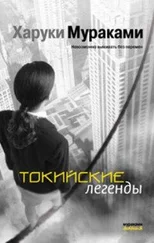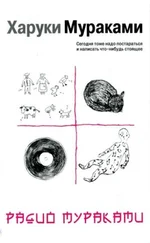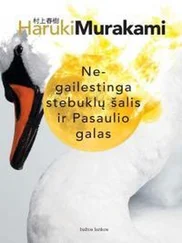Menshiki paused before replying. “If I wanted to scientifically determine if Mariye Akikawa is related by blood to me, I could. It might take some effort, but it’s not impossible. The thing is—I don’t want to.”
“Why not?”
“Because whether she’s my child or not isn’t a determining factor.”
I gazed at him, mouth shut. He shook his head, his abundant white hair waving, like it was fluttering in the breeze. When he spoke, his voice was calm, like he was explaining to some large, intelligent dog how to conjugate simple verbs.
“I’m not saying either way is fine. It’s just that I don’t feel like determining the facts. Maybe Mariye Akikawa is my biological child. And maybe she isn’t. But what if I do determine that she’s my real child—then what? I announce to her that I’m her real father? Try to get custody? I can’t do that.”
Menshiki shook his head again, rubbing his hands together on his lap like it was a cold night and he was warming himself before a fireplace. He continued.
“Mariye Akikawa is living a peaceful life in that house with her father and her aunt. Yes, her mother died, but the family—despite some issues her father has—is relatively healthy and functional. She’s close to her aunt. She’s made a life for herself. If I suddenly appear on the scene announcing that I’m her real father, even if I could prove it scientifically, will that solve anything? The truth will actually confuse things. And it’s not going to make anyone happy. Including me.”
“So you’d prefer to keep things the way they are, rather than let the truth come out.”
Menshiki spread his hands on his lap. “In a word, yes. It took some time for me to arrive at that conclusion, but my feelings are firm. I plan to live the rest of my life holding on to the possibility that Mariye Akikawa is my real child . Watching, from a distance, as she grows up. That’s enough. Even if I knew for sure she was my child, that wouldn’t make me happy. The sense of loss would be all the more painful. And if I knew she wasn’t my child, that would, in a different sense, also deepen the sense of loss. Or maybe crush me. Either way there’s no happy result. Can you follow what I’m trying to say?”
“I think so. At least in theory. But if I were in your position, I’d want to know the truth. Theory aside, it’s natural for people to want to know the truth.”
Menshiki smiled. “You’re still young, so that’s why you say that. When you get to be my age, you’ll understand how I feel. How much loneliness the truth can cause sometimes.”
“So what you’re after is not to know the unmitigated truth, but to hang her portrait on your wall, gaze at it every day, and ponder the possibilities. Are you sure that’s enough?”
Menshiki nodded. “It is. Instead of a stable truth, I choose unstable possibilities. I choose to surrender myself to that instability. Do you think that’s unnatural?”
I did indeed. Or at least I didn’t see it as natural. I wouldn’t go so far as to call it unhealthy, though. But that was Menshiki’s problem, not mine.
I glanced over at the Commendatore seated on top of the Steinway. Our eyes met. He raised both index fingers upward and spread them apart, as if to say, Let’s put that answer on hold . Then he pointed with his right index finger to a watch on his left wrist. Of course the Commendatore wasn’t wearing a watch. He was just pointing to where one would be. And of course what that meant was, We should be leaving soon . The Commendatore’s advice to me, as well as a warning. I decided to heed it.
“Could I have a little time to get back to you on this? It’s a delicate matter, and I need time to consider it.”
Menshiki held up his hands from his lap. “Of course. Consider it as long as you’d like. I’m not trying to rush you. I know I may be asking too much.”
I stood up and thanked him for the dinner.
“Ah, there’s one thing I forgot to tell you,” Menshiki said, as if suddenly remembering. “It’s about Tomohiko Amada. We talked earlier, didn’t we, about how he’d studied abroad, in Austria? About how, just before World War Two broke out, he rushed back home?”
“Yes, I remember.”
“I researched it a bit. I’m interested, too, in what was behind all that. It happened a long time ago, and I don’t have all the facts, but there were rumors then of some sort of scandal.”
“A scandal?”
“That’s right. Amada was apparently caught up in an aborted assassination attempt in Vienna. It turned into a political crisis, and the Japanese embassy in Berlin got involved and secreted him back to Japan. According to certain rumors. This was right after the Anschluss . You know about the Anschluss, I assume?”
“That was when Germany annexed Austria in 1938.”
“Correct. Hitler incorporated Austria into Germany. There was a lot of chaos, and the Nazis finally took over all of Austria pretty much by force, and the nation of Austria vanished. This was in March 1938. The place was in turmoil, and in the confusion of the moment a lot of people were murdered. Assassinated, or murdered and made to look like suicides. Or else sent to concentration camps. It was during this time that Tomohiko Amada studied in Vienna. Rumor had it that he fell in love with an Austrian woman and got mixed up with an underground resistance group comprised largely of college students, who plotted to assassinate a high-ranking Nazi official. Not the sort of thing either the German government or the Japanese government would condone, for they’d signed a mutual defense pact only a year and a half before this, and the relationship between the two countries was growing closer all the time. Both were dead set on avoiding anything that would hinder their pact. Though Tomohiko Amada was still young, he had already made a name for himself as an artist in Japan, and his father was a large landowner, a locally politically influential person. A person like that couldn’t just be secretly blotted out.”
“So Tomohiko Amada was sent back to Japan?”
“Correct. Rescued is more like it. Thanks to the political considerations of higher-ups, he narrowly escaped getting killed. If the Gestapo had gotten hold of him under suspicion of something that serious—even if they hadn’t had any clear-cut evidence—that would have been the end of him.”
“But the assassination didn’t happen?”
“No, it was abortive. There was an informant in the group, and the plan was leaked to the Gestapo. There was a wholesale arrest of the members.”
“There would have been a real uproar if they’d gone through with it.”
“The strange thing is, there was no talk of it at the time,” Menshiki said. “There were whispers about a scandal, but there doesn’t seem to be any public record of it. For various reasons, it was covered up.”
So the Commendatore in the painting Killing Commendatore might represent that Nazi official. The painting might be a hypothetical depiction of the assassination that never actually happened in Vienna in 1938. Amada and his lover were connected with this plot, and then it was discovered by the authorities. The two of them were torn apart, and the woman most likely killed. And after he returned to Japan Amada transferred that horrific experience in Vienna onto the very symbolic canvas of a Japanese-style painting. Adapting it, in other words, into a scene from the Asuka period, set over a thousand years ago. Killing Commendatore was a painting Tomohiko Amada painted for himself alone. He felt compelled for his own sake to paint it to preserve that awful, bloody memory from his youth. Which is precisely why he never made the painting public, why he wrapped it up tightly and hid it away in the attic.
Читать дальше

